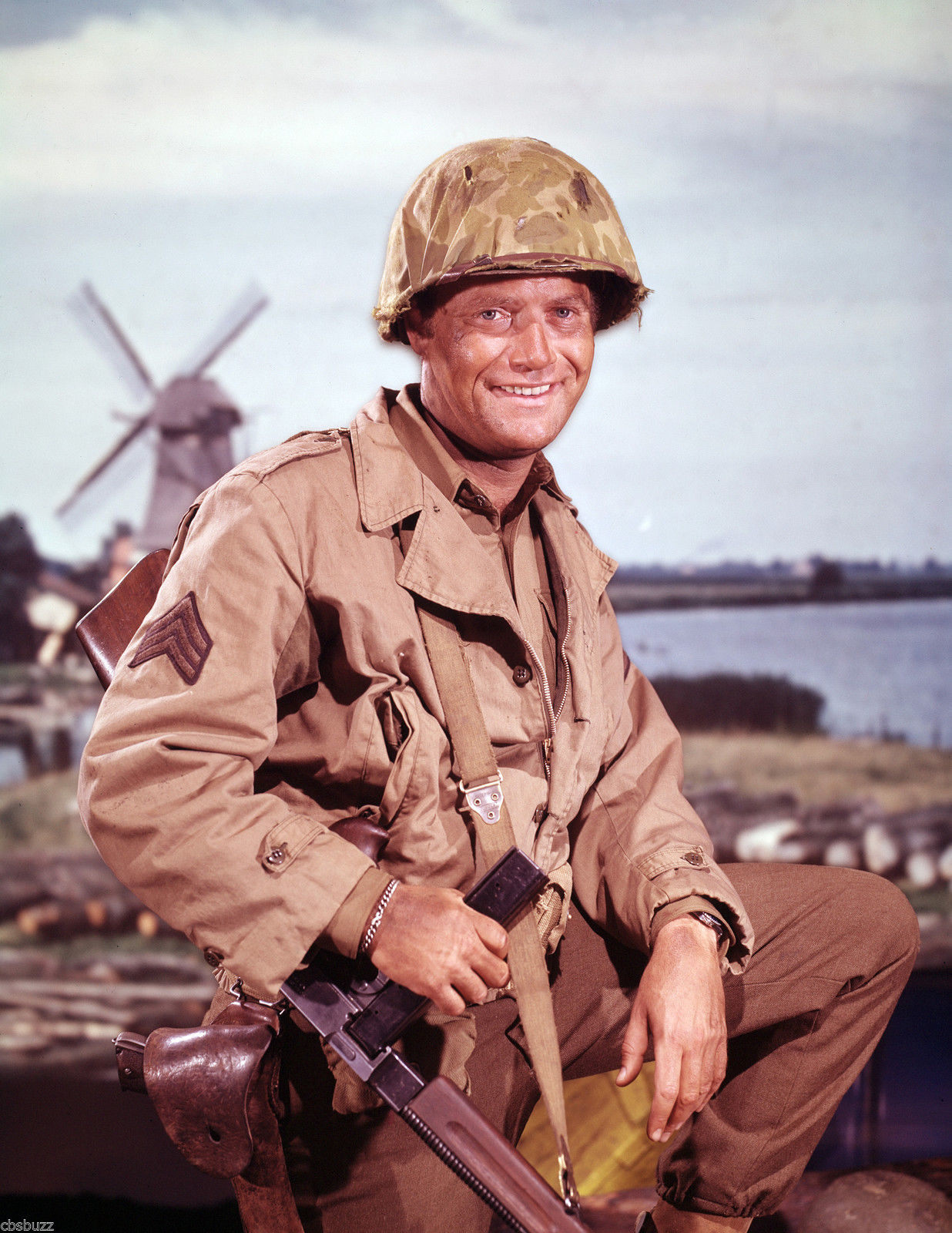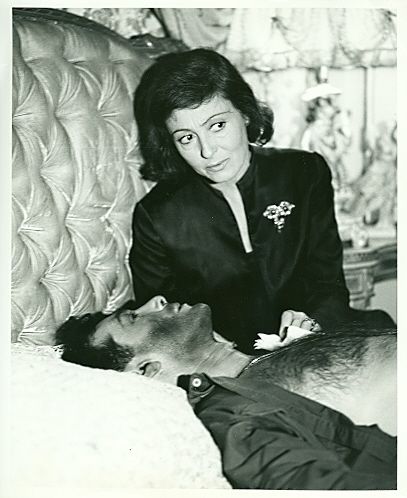Vic Morrow

Vic Morrow had an absolute dislike of firearms. He used a Thompson submachine gun in our series, but that was work. In any other respect he’d have nothing to do with them. On one of the few days we got off early while there were still several hours of daylight left, I said to him, "I’ve got a couple of shotguns in the back of my station wagon. You want to shoot some skeet?"
Without so much as a pause he responded, "No, thanks. I can’t stand to kill clay."
He knew he could always break me up and during our five years together he did it quite a bit. His sense of humor happened to tickle my funny bone and he knew he had my number.
In the second year of the show he began directing. His work was first rate. In our fourth year, he directed a two-parter that was a culmination of his tremendous talent. However, we still didn’t have a title for it at the wrap party. I was with Gene and Selig on the soundstage where we were celebrating. Neither of the two men could come up with a suitable title. Frank Kowalsky, a man of rare good taste and education, stumbled over with a half-finished drink. He grandly held up a hand and said, "Why you’re all idiots! There’s only one title for this film!’
We looked at him.
"Hills Are for Heroes. What else could you call it?" He stumbled off and that became the title.
To this day, having watched it innumerable times, I still believe it was inspired, done by a master director. Both segments, pasted together as a feature, would be one of the greatest war films ever made. It’s also one of the greatest anti-war films I’ve ever seen.
Our budgets for the first year, including pre-production, production, and post-production, (that is, the entire cost of each negative) was $127,500. In the fifth year (in color) we delivered them for $183,000.
Our time schedules were six shooting days. Therefore, on a five-day week, we took a week and one day to shoot a show. Here and there, a segment went to seven shooting days and everybody in the front offices got a little nervous.
A great deal of Hills Are For Heroes was shot on location in Thousand Oaks (just about ten miles away from where I now live). The sets were spectacular in their simplicity. Vic took twenty-one days to shoot both segments and a budget of $500,000. About eleven days into shooting we were having a cigarette together and I mentioned to him that he was only about half finished. "I know," he said off-handedly.
"So what about ABC?" I asked
He flipped his butt away and stood up, "Fuck ‘em." he said. And you know? He was right!
Having played us against The Gallant Men in the first year, which was hardly competition considering who we had steering our show, ABC found themselves with a true winner. Tuesday night on the network was ours! Combat!, which came on at seven-thirty for an hour, anchored the entire evening for ABC. In terms of making intelligent decisions, ABC was no smarter than the other two networks, NBC and CBS, just luckier. I mentioned the other day to an executive producer I know, how the same stupid people seem to be running the networks, the same breed only with different names. His answer was, "You’re right about that, only now they’re more robotic."
In the first year of the show, Vic and I were given dressing room suites in a building that hadn’t been renovated in twenty-five years. We also had no dressing rooms on the outdoor sets (we were thankful just to have chairs). Vic went on strike the beginning of the second year and things got much better. Nobody in Hollywood listens to you unless you go on strike. But, and that’s a BIG but, they have to need you desperately, first. Gene Kelly and James Garner have both said it, in slightly different ways. This business gives you nothing. If you want it, you have to take it! Garner had to do it, more than once, to teach Warner Brothers first, later Universal. Peter Falk had to do it when Colombo became a hit. Just like Carrol O’Connor for the breakthrough comedy classic All In The Family, and Redd Foxx, and on and on.

Rick Jason with Luise Rainer in the Combat! episode "Finest Hour"Also see: Luise Rainer DVDs
Sometimes it doesn’t work. Greta Garbo had become a gigantic star at MGM. She was making about $300 a week. She marched into Louis B. Mayer’s office, plopped herself down and said in no uncertain terms that she was going back to Sweden unless she got a raise to $5,000 a week. Mayer caved and she got her five thou. But they forgot one thing. Wallace Beery was the highest paid actor at the studio and his contract expressly stated that he was to remain the highest paid. He then was getting three thousand a week (in the Depression, mind you). His salary immediately jumped to $5,001 a week.
Then, there was Luise Rainer. In her first film, The Great Ziegfeld, she got an Oscar for only a short scene on the telephone that had everybody in the audience blubbering like babies. The next year she got another Oscar playing Olan in, The Good Earth. The first back to back awards. She was making $250 a week and she walked into Mayer’s office and demanded a new contract. His answer? "You’re fired!" She did one or two so-so pictures at other studios and wasn’t heard of again in this town until Gene and Selig brought her over from England for a Combat! segment.
(Also see Vic Morrow in Combat! at CombatFan.com)